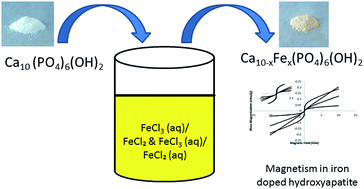An intrinsically magnetic biomaterial with tunable magnetic properties
Abstract
Many magnetic materials lack intrinsic biocompatibility and require surface functionalization for in vivo applications. In this study, we fabricated an intrinsically biocompatible, biodegradable magnetic material through iron substitution into hydroxyapatite (FeHA) via ion-exchange. Controlling the oxidation state of iron in the ion exchange solution resulted in ‘tunable’ magnetic properties. Superparamagnetic behavior was observed in Fe2+HA and Fe2+3+HA and paramagnetism in Fe3+HA. FeHA powders were characterized using field emission scanning electron microscopy (FESEM), X-ray diffraction (XRD), Fourier transform infra-red (FTIR) and X-ray photoelectron spectroscopy (XPS) with no detection of iron oxide phases. The as-synthesized HA and Fe2+3+HA samples were characterized in vitro using MC3T3-E1 cells. Cellular proliferation of Fe2+3+HA was found comparable to HA, while our cytotoxicity results from a lactate dehydrogenase assay showed Fe2+3+HA to be less toxic than pure HA, a widely used implantable biomaterial. Thus, these results collectively suggest that we have fabricated a magnetic biomaterial with intrinsic biocompatibility.


 Please wait while we load your content...
Please wait while we load your content...